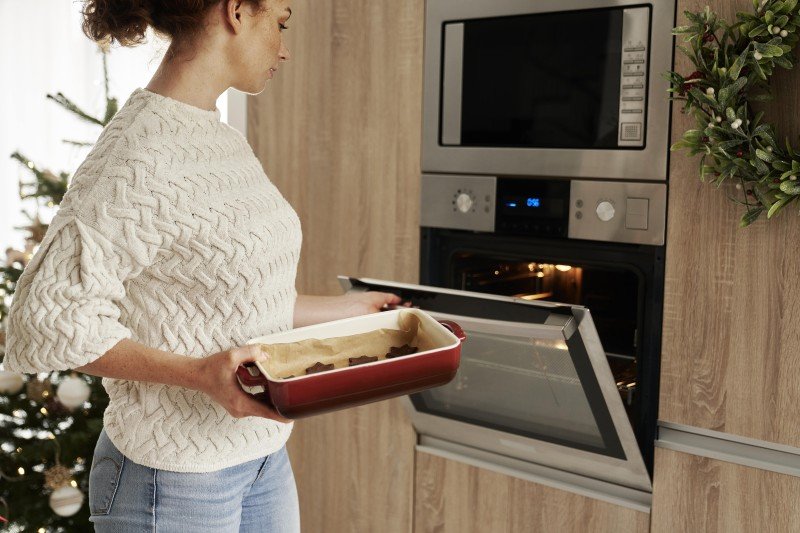10 Ways To Build Your Ovens And Hobs Empire
Understanding Ovens and Hobs: A Comprehensive Guide
Cooking has actually come a long way given that the days of open flames and rudimentary cooking techniques. Today, ovens and hobs are at the heart of modern kitchen areas, providing flexibility, effectiveness, and a variety of cooking options. Whether you are an amateur cook or an experienced chef, understanding the distinctions, functions, and functions of these appliances is important for maximizing cooking potential. This short article breaks down the numerous kinds of ovens and hobs readily available on the market, their performances, and how to choose the best home appliances for your kitchen.
What is an Oven?
An oven is an enclosed space developed for heating and cooking food, offering various techniques such as baking, roasting, and broiling. Ovens can be found in numerous types, each serving special cooking choices and requirements.
Kinds of Ovens
Traditional Ovens:
- Use gas or electrical power for heating.
- Normally include a heating component at the top and bottom.
- Suitable for basic baking tasks.
Convection Ovens:
- Use a fan to flow hot air, promoting even cooking.
- Suitable for baking, roasting, and reheating.
- Minimizes cooking time and boosts taste.
Steam Ovens:
- Utilize steam to prepare food while retaining wetness and nutrients.
- Exceptional for health-conscious cooking, such as veggies and fish.
Microwave Ovens:
- Use electro-magnetic radiation to heat food rapidly.
- Best for reheating leftovers or cooking easy meals.
Wall Ovens:
- Built into the wall, conserving space in the kitchen.
- Available in different setups, including single or double ovens.
Key Features of Ovens
- Temperature Control: Precision heating for various baking and cooking processes.
- Self-Cleaning Options: Some designs have self-cleaning modes that utilize high temperatures to burn off food residue.
- Smart Features: Wi-Fi connectivity permits remote pre-heating, monitoring, and dish management through smartphones.
What is a Hob?
A hob is a cooking surface area, frequently referred to as a stove or cooktop, where pots and pans is positioned for heating. Hobs are offered in various products, sizes, and heating methods, accommodating diverse cooking requirements.
Types of Hobs
Gas Hobs:
- Utilize gas burners for direct flame cooking.
- Deal accurate temperature level control and are preferred by numerous professional chefs.
Electric Hobs:
- Use electric coils or smooth tops.
- Some designs are geared up with induction innovation, supplying quick heating through electromagnetic energy.
Induction Hobs:
- Cookware should be made from magnetic products.
- Really energy-efficient, supplying quick heat and minimizing burn risks.
Ceramic Hobs:
- Feature a glass-ceramic surface with heating aspects beneath.
- Easy to tidy however can be less energy-efficient than induction hobs.
Secret Features of Hobs
- Burner Configuration: Varies from two to six burners, depending on model and size.
- Power Levels: Multiple settings permit for greater accuracy in cooking.
- Safety Features: Options like flame failure gadgets and child lock settings ensure security throughout cooking.
Choosing the Right Oven and Hob
Choosing the ideal oven and hob for your kitchen involves careful consideration of different factors. Below is a list of concerns to guide your selection procedure:
- What is your main cooking style?
- How much kitchen space do you have?
- What is your spending plan?
- Do you prefer gas or electric home appliances?
- Are additional features like smart connection crucial to you?
Table Summary of Key Differences Between Ovens and Hobs
Feature
Oven
Hob
Functions
Baking, roasting, broiling
Boiling, frying, sautéing
Cooking Method
Enclosed heat
Direct cooking surface area
Temperature level Control
Adjustable settings
Stove settings
Types
Electric, gas, convection, microwave
Gas, electric, induction, ceramic
Cooking Capacity
Larger (can cook numerous meals)
Smaller (focus on instant cooking)
Cleaning
Self-cleaning choices readily available
Usually manual cleansing required
Maintenance Tips for Ovens and Hobs
Proper care and upkeep of your cooking appliances extend their life expectancy and effectiveness. Here are important upkeep pointers:
Regular Cleaning:
- Clean the oven interior after each use to avoid residue accumulation.
- Clean down hob surfaces after preparing to avoid stains.
Check Seals:
- Ensure the oven door seals are intact to preserve energy effectiveness.
- Replace worn-out gaskets and seals as required.
Examine Burners and Elements:
- For gas hobs, check for blockages in burners.
- For electric hobs, check coils and surfaces for signs of wear.
Frequently asked questions
Can I utilize any pots and pans on induction hobs?
- No, induction hobs just deal with magnetic pots and pans, such as cast iron or stainless-steel.
What is the most energy-efficient cooking device?
- Induction hobs are normally the most energy-efficient option, utilizing less energy than traditional gas or electric models.
How typically should I clean my oven?
- It's advisable to clean your oven every few months, or more regularly if you utilize it often.
Can I set up an oven and hob individually?
- Yes, both home appliances can be set up independently based on kitchen style and space.
What should I consider when setting up a gas hob?
- Guarantee proper ventilation and adhere to regional safety codes. Ovens With Hobs is a good idea to have a professional set up gas home appliances.
Comprehending the functions, types, and upkeep of ovens and hobs can considerably improve your cooking experiences. Picking the ideal devices customized to your cooking design, kitchen area, and security requirements can make all the difference in achieving cooking success. By being informed about your choices, you can delight in a more effective and pleasurable cooking journey, bringing delicious meals to your table with ease.
